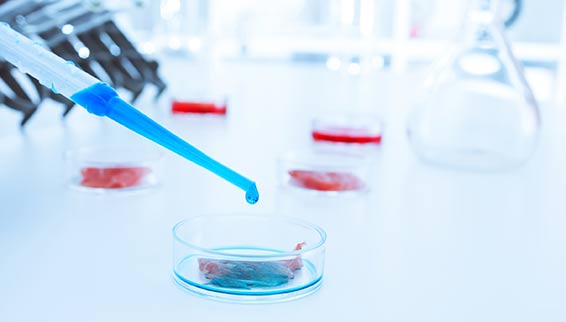Chemicals in cosmetics
In Europe, we use at least seven different cosmetic products per day on average. They range from hygiene products like soap, shampoo, deodorant and toothpaste to beauty products like perfumes and make-up. Cosmetics contain many chemicals – take a look at the ingredients labels.

Europe has the most comprehensive laws on cosmetics in the world. The regulation on cosmetics contains a list that specifies the substances that are allowed to be used, those that have specific restrictions and those that are banned.
Some chemicals in cosmetics may cause allergic reactions. These ingredients are often man-made but may also be of natural origin. ‘Natural’ therefore does not necessarily mean increased safety.
The substances that may cause allergies tend to be preservatives and perfumes. Preservatives are there to prolong the shelf-life of a product and to kill bacteria that would otherwise grow on it.
Who is responsible for the safety of cosmetics?
Before selling a cosmetic product, a manufacturer must make sure that their product goes through a scientific assessment of its safety. They need to submit the assessment information to European authorities through a cosmetic products notification portal, showing that the substance used in the product does not pose a health risk.
The authorities in each EU country do market surveillance and carry out tests on products. They may withdraw products that contain forbidden chemicals. These are reported to the European Commission, which shares the information among all the EU countries.
You can subscribe to a weekly summary of products that have been withdrawn in any of the EU countries because they have been found to be unsafe.
Nanomaterials
In cosmetic products, a nanomaterial is an insoluble or biopersistent and intentionally manufactured material. In the EU, companies are required to specify if their cosmetic product contains nanomaterials.
Nanomaterials used as colourants, preservatives and UV filters must be authorised by the European Commission before they can be used in cosmetic products.
Nanomaterials must be labelled in the list of ingredients with the word “nano” in brackets following the name of the substance.
No animal testing
Testing cosmetics on animals has not been allowed in Europe since 2004. It is also forbidden in Europe to market any cosmetic product that contains ingredients tested on animals.
Still, many ingredients that go into cosmetics are also used in other products, such as in pharmaceuticals, detergents and food. Some of these substances may therefore still be subject to animal testing requirements under these laws. There are still some tests that cannot yet be replaced with reliable non-animal methods, but the EU and the international community are working on developing more.
Read more
- Understanding the label - Cosmetics Europe
- CosmEthics – app to find out what is in your cosmetics - co-funded by EU’s Horizon 2020 programme
- Appli QuelCosmetic - A mobile app to search for chemicals in cosmetics [FR]
Read Also
-
 general
generalAlternatives to animal testing
Chemicals need to be tested so that they are safe to use. This means that we need scientific information on chemicals to understand how they may affect people and the environment. There are many ways to obtain this data.
READ MORE -
 general
generalCombined effects of chemicals
Chemicals are all around us but what happens to our health or the environment when the effects of individual substances are combined?
READ MORE
